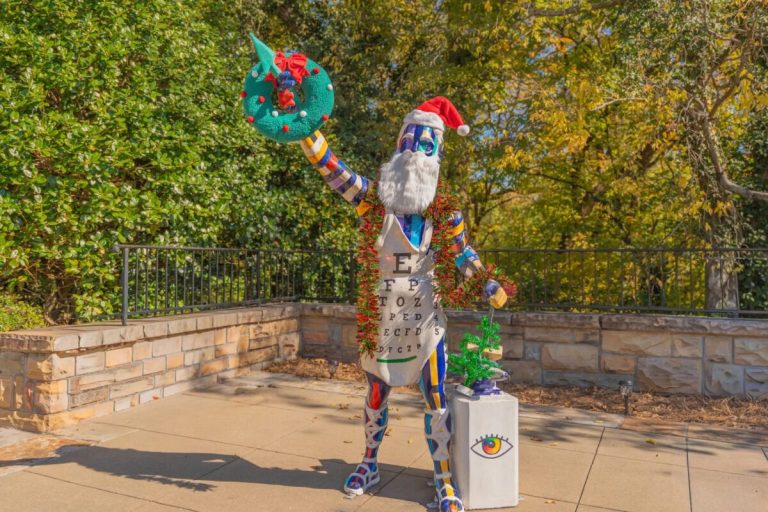Rain, rain go away. Rainfall records shattered in Birmingham, Jan-Feb of 2020.
Reading time: 5 minutes
Sponsored

Other than talk about the coronavirus, the number one conversation amongst Birminghamians has been the massive amounts of rainfall we’ve had since the beginning of 2020.
I can’t tell you how many times I’ve headed out in the mornings and had to turn around for an umbrella. Or, showed up drenched for a meeting. Rain boots have become the shoe of choice for wading through parking lots or dodging overswelled drains.
It has rained so much that when a double rainbow appeared in late February across Birmingham’s skyline, some folks saw it as a kind of ‘sign’.
Remember in the book of Genesis God gave Noah the rainbow as a sign that torrential rains were going to cease?
This time it didn’t.
2020—Wettest January and February ever
According to the National Weather Service Birmingham Office, January 1, 2020 to March 3, 2020 were the wettest first two months in Birmingham history since records have been kept starting in 1895.
How much rain did we get? 23.03 inches in January and February! The previous rainfall record in Birmingham? 19.50 inches in 1903. That’s an 18% increase in the all time record.
Not only did we shatter the record in the Magic City, but neighboring Tuscaloosa and Anniston set new rainfall records as well.
Is this the new normal in Alabama?

The latest extreme weather event got me thinking about the most recent release of the National Climate Assessment, prepared by the National Oceanic and Atmospheric Administration (NOAA).
The actual document is easy to read, full of graphs to make their points.
So, is this recent heavy rainfall the new normal? Well, it’s complicated.
The National Climate Assessment predicts that we will be having more extreme weather events in the South because our climate is changing. That means more dramatic swings between heavy downpours and dry seasons.
From the executive summary:
“The Southeast includes vast expanses of coastal and inland low-lying areas, the southern portion of the Appalachian Mountains, numerous high-growth metropolitan areas, and large rural expanses. These beaches and bayous, fields and forests, and cities and small towns are all at risk from a changing climate. While some climate change impacts, such as the sea-level rise and extreme downpours, are being acutely felt now, others, like increasing exposure to dangerously high temperatures, humidity, and new local diseases, are expected to become more significant in the coming decades.”
Extreme weather—the Great Drought of 2016

Are we having more extreme weather events here in Birmingham? Sure looks like it. An examination of the ‘year in review’ report by the National Weather Service on Central Alabama suggests that we have recently experienced some pretty wacky weather.
For example, who can forget the drought of 2016? That September and October, Little River Falls, one of the state’s largest and most popular waterfalls evaporated, down to a trickle, as you can see in the picture above. In the Birmingham area, there were water shortages. Lake Purdy looked like a moonscape and Patton Creek, a tributary of the Cahaba River, had disappeared, leaving children to stack rocks upon rocks within the channel of the creek bed.

How bad was the drought?
Birmingham did not experience rain for 61 days, beginning in August and ending in October. The previous rainless streak was 52 days set in 1929. In Tuscaloosa, it did not rain for 71 days, nearly doubling the previous record of 37 days set in 1955.
Whiplash! Record rainfall in 2017
Surprisingly, in 2017 the NWS documented the wettest summer ever in Birmingham, brought on by a number of nearby hurricanes that tracked through central Alabama.
In fact, Birmingham broke its 101-year-old summer precipitation record by a full 2 inches, accumulating 27.90 inches of rainfall between June and August.


The 2019 September heatwave
And who can forget the heatwave of 2019? After September 1925, 2019’s September was the 2nd hottest on record for Birmingham. According to Accuweather.com, 28 of the 30 days in September were over 90 Degrees, including 19 that were 95 degrees or more. Thankfully, the heatwave did break after the first week of October, but only after we started October 2nd with 103 and the next day at 101 degrees.

Not to be outdone, Tuscaloosa and Anniston notched their hottest September ever in 2019.
The heatwave even caught the attention of UAB polar scientist Jim McClintock, who wrote an op-ed about the South’s changing climate in 2019, including how it affected Alabama fans watching games at Bryant-Denny Stadium.
Something in Common
What is noteworthy about all these extreme weather records that have been broken since 2016 in Birmingham? They shattered records that have stood between 96 and 117 years.
We all recognize Alabama’s weather can be extreme. What can you do to prepare for even more wild weather in Alabama? Stay tuned.




